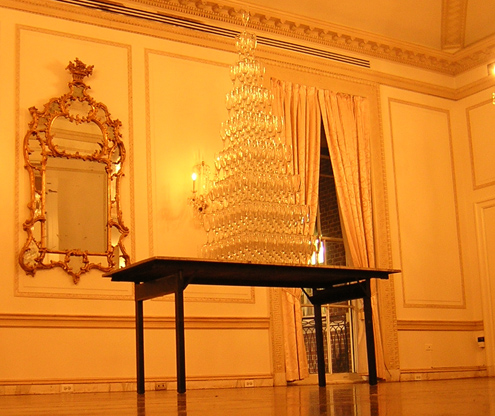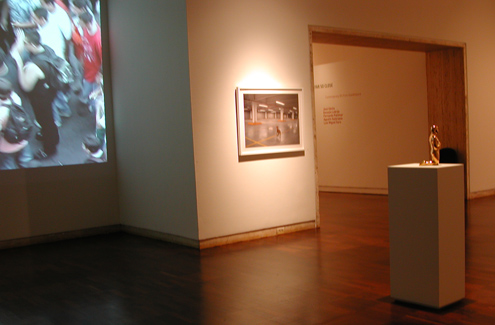So Far So Close: Contemporary Art from Guadalajara
On view:
through
So Far So Close: Contemporary Art from Guadalajara
The exhibition So Far So Close: Contemporary Art From Guadalajara displayed works by artists from Guadalajara, the second largest urban center in Mexico. The exhibition included videos, installations, digital photography, and sculpture by José Dávila, Gonzalo Lebrija, Luis Miguel Suro, Fernando Palomar, and Agustín Solórzano.

Curated by Gabriela Rangel, So Far So Close focused on the movement of young artists developing in Guadalajara over the past two years. It called attention not only to the resurgence of artistic production in the region, but also to the innovative art work produced there. “Guadalajara is perhaps the country’s symbolic and artistic center that brings together the most powerful images of Mexican popular culture, from its colorful mariachis to José Clemente Orozco’s public commissions,” said Gabriela Rangel. “In contrast with the aesthetics of the movie Amores Perros the artists included in this exhibition were moving in a different direction as they reject such an approach in their work.”
Gonzalo Lebrija considered that his video and digital prints “do not address a discourse that refers to migration, culture, and national identity,” but rather dialogues with daily life. Fernando Palomar, who created a mural painting in situ for the show, investigated the concept of “weak thinking” coined by the Italian philosopher Gianni Vattimo. The subject matter of works by Luis Miguel Suro and Agustin Solórzano, whether video, sculptures or installations, used metaphor where sarcasm and irony were mixed to disrupt conventional meaning and context. José Dávila’s enigmatic photographs questioned the function of space, where the space represented lost its meaning and its basic properties were removed.
Gabriela Rangel stated: “Even if we admit that notions of 'close' and 'far' limit and simplify the problem by situating it within extremes which perpetuate the center/periphery binary logic, these geographical notions paradoxically describe the plight of any third-world artist wanting to inscribe his or her work into the global art scene operating from a provincial city with obsolete institutions and systems of circulation often consisting merely of interpersonal networks of contacts and random professional exchanges.”
This exhibition took great strides in breaking down barriers of national representation. The artists and their works were not perceived through the funnel of Mexico City but rather recognized for their artistic contributions in their own right.

Exhibition catalogue available
The realization of this Project was made possible with the support of The Jumex Collection, CONACULTA, The Bruce and Diane Halle Foundation, and the Ayuntamiento de Guadalajara.







